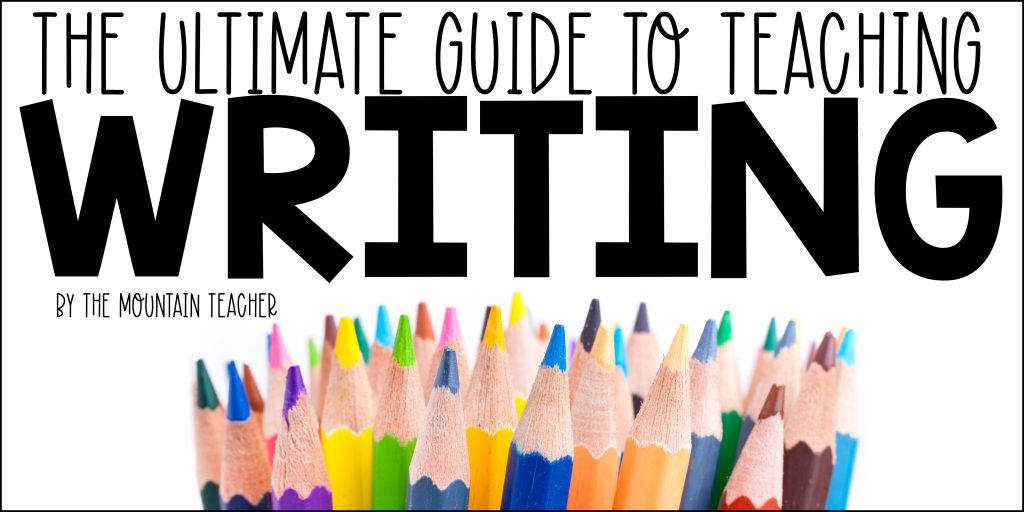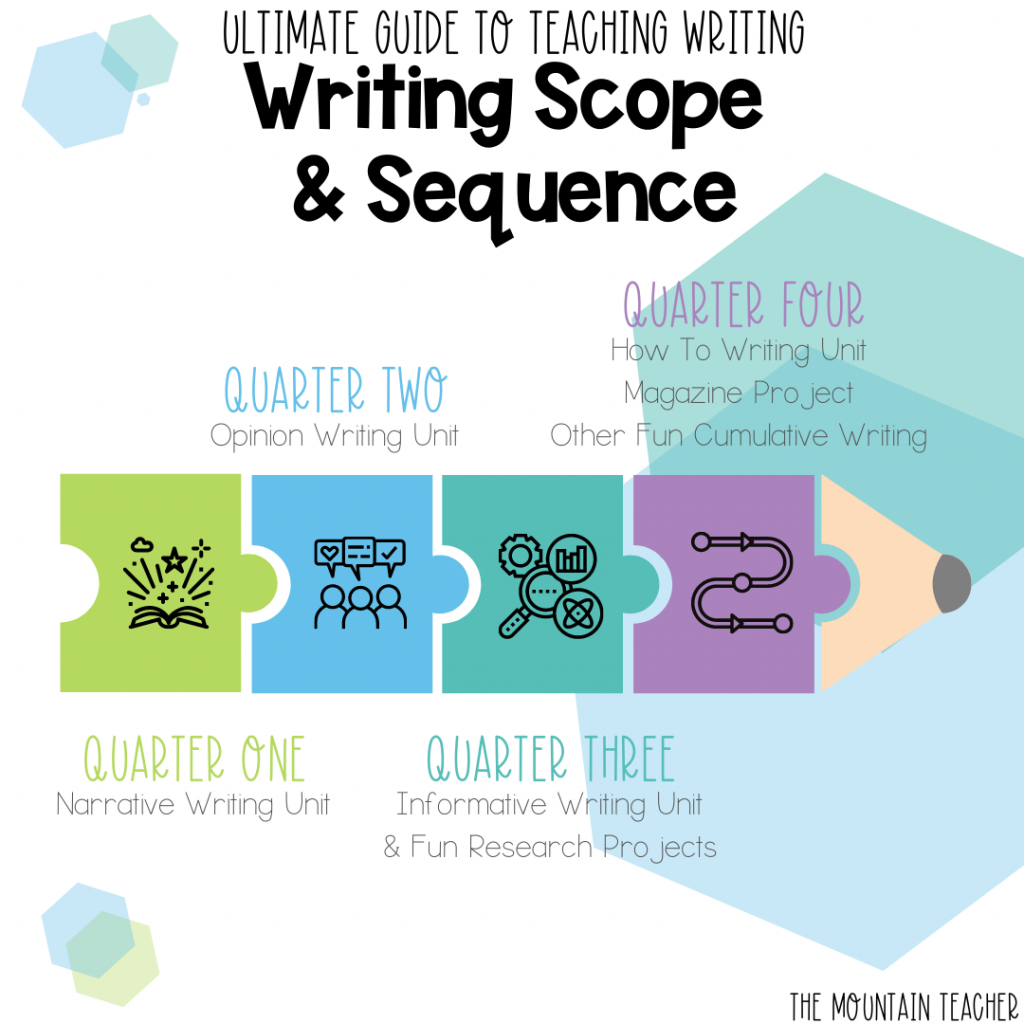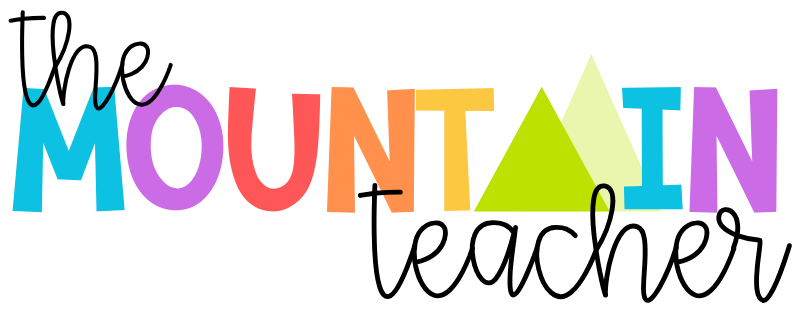How to Set Up EVERYTHING in Your Writing Classroom To Make Life Easier

Teaching writing can seem daunting. It can be hard to tell where to start and what to do. What if I told you that setting up your elementary writing centers and your writing block could be easy peasy lemon squeezey? Read on to discover EVERYTHING you need to know about setting up a writing block that ACTUALLY WORKS for you, your students and your classroom.
Timing
The biggest struggle that comes with elementary writing centers is the limited time during the day that we get to actually teach writing. I have worked with a LARGE array of time slots anywhere from 20 minutes a day… YES 20 minutes to teach a WHOLE CLASS writing… all the way to 90 minutes! If you get to choose, 60 minutes is ideal, 45 minutes is workable, and 20 minutes is tough.. but we can do it.

You will want to break your writing block up the same way you’d break up any other content. Times will vary based on your overall content block allotment:
- Warm Up (5-10 minutes)
- Mini Lesson (5-10 minutes – shorter than other subjects, so students have the most time to write)
- Small Groups / Independent Work Time (anywhere from 5 minutes each to 20 minutes each)
- Closing (5 minutes or less)
If your writing block is limited, you can get creative with your writing timing. Perhaps instead of doing your writing warm up during your writing block, you can do it as morning work. If you don’t have time to do all of the writing centers that you’d like, embed those into your reading centers and call it ELA time. The core components you will not want to miss out on during writing are your mini lesson, meeting with small groups, independent work time and a closing.

Warm Up
My FAVORITE type of writing warm up is to simply let students use a digital or handwritten writing journal each day. Students can either use a whole group topic, or write about anything that they want. This writing is typically ungraded, and helps students build up writing fluency.
Another great writing warm up is having students work on grammar topics. Students might identify parts of speech, work on using different parts of speech, or can do grammatical editing each day. This helps students know how to properly use English in their formal writing pieces.
Additionally, students can do weekly letter writing, including Friday Letters, as a warm up.
Whole Group Mini Lesson – A Journey Through the Writing Process
After the warm up, a whole group mini lesson is the natural next step. This lesson can and should be brief, to provide the most amount of time for students to actually be writing during their writing block. Each week, we produce one formal piece of writing that gets added to their year long writing portfolio. I follow the same lesson plan for my mini lessons every week that guides students through the writing process:

- Monday: Mentor Text & Writing Plan
- Tuesday: Model using a plan to write half of a draft including a topic sentence (or paragraph) and two body paragraphs (either events, reasons, facts, or steps depending on the genre). This is when I will also focus on any new grammatical skill or writing skill I want them to add to their writing including quotation marks, using verbs, adding details, adding different types of sentences, etc. into their writing.
- Wednesday: Review the skill from yesterday and then continue using a plan to write half of a draft including two body paragraphs (either events, reasons, facts, or steps depending on the genre) and a closing sentence (or paragraph).
- Thursday: Revise and edit writing with their peers. Sometimes I will begin grading at this time.
- Friday: Give students time to publish, craft and share while the teacher grades papers.
During the mini lesson, students are NOT actually writing. This is when we have an open class dialogue and I am modeling at the white board or on chart paper for the class. Most of the time we write the sentences together so that students can show ownership of our shared writing. However, if you are crunched for time, it can save a lot of time to have your teacher model on display already.
Small Groups
Students do the bulk of their actual writing during small group time. I passionately believe that you should meet with every student in a small group every day if time allows. Typically, this means that I group students based on ability and I differentiate how much they write and what writing strategies they are using during the small group periods.
I meet with groups from anywhere between 7 to 20 minutes. During this time, students get started on their writing at my back table. When they either finish or seem like they are on track to finish, then I allow students to be released from my back table to go work around the room. Students always show me their completed work for the day before starting on their fun centers.

I usually start with my most struggling writers who need the most time, and then work my way through the class. The more students struggle with writing, the longer I like to give them at my back table. These students might need additional support such as sentence stems, model sentences, additional time, voice to text aides and other accommodations. For students who are struggling greatly, it can also be beneficial to start the year by having them all write the same story. This gets them used to the writing process and various writing strategies.
For students who seem to be getting it and can write fluently already, you can have them start their writing not at your back table. Then, when they get to your back table, you can have them work on adding more complex writing strategies into their pieces. This can include things like dialogue, paragraph writing, adding problems and solutions, or more.
I set a timer so that my groups don’t go too far over. Students are usually doing whatever we just modeled, but with their own thoughts and ideas. The whole class will be working on the same topic at the same time. For example, if I modeled writing a story about summer, then the whole class is writing a narrative story about summer.
Centers
Writing centers can be set up in many different ways and it very much depends on the amount of time you are given. For me, the most important part of writing is for students to complete our weekly project. Therefore, I typically allow students to do must dos/may dos or “dinner and dessert” style centers in writing.
You can also do traditional center rotations, and have your students travel from center to center as a group.

Some FUN ideas to embed into your writing centers are:
- Daily Writing Journals
- Silly Stories
- Roll a Story
- Creating Digital Stories or Books
- Daily Grammar Practice
- Spelling Practice
- Monthly Crafts
- Friday Letters
Closing
Usually for our writing closing I allow students to share their work with a peer. We quickly review the skill we were focused on, we find a buddy, and we share our work from the day. Then we allow our buddy time to share their work. This keeps it quick, but is important so students feel like they accomplished the daily learning goal.
Using Mentor Texts
Mentor texts for writing are SO fun and important. First of all, it models daily language to students. Second, it is a GREAT way to get students engaged in genres of writing. This can be especially important towards the end of a learning unit when students are starting to feel a bit burnt out on informative topics or narrative ideas.
I use a large variety of mentor texts throughout the year but you can find some of my favorites for each genre below:
- Narrative Writing Mentor Texts
- Informative Writing Mentor Texts
- Opinion Writing Mentor Texts
- How To Writing Mentor Texts
Embedding Technology
You may love or hate using technology in your classroom, but it is a vital skill that is not going away.

There are some great ways to embed technology into your elementary writing centers, including:
- Creating digital books
- Allowing students to publish pieces digitally
- Using digital tools to edit
- Using digital dictionaries
- Recording students reading their writing aloud
- Using technology for research projects
- Letting students use a digital writing journal
There are also a variety of great writing projects that can be done digitally. I would teach this very differently IN PERSON or as a DIGITAL TEACHER. Here is a roundup of digital activities for each genre:
- Digital Narrative Writing Activities
- Digital Informative Writing Activities
- Digital Opinion Writing Activities
Assessments
There are many types of formal, informal and self assessments that can be used in writing blocks.
Typically, I test formally students at the beginning and end of each writing unit. This is done by genre. I have them do a “quick write” using the same prompt (or a very similar prompt) and then we see how they have grown throughout the unit.
My informal assessments are typically done daily during my small groups. I simply use a checklist to keep track of if students utilized our daily skill during practice or not. I also use this time to quickly help students who are not achieving mastery learn to use the skill appropriately.

Students also work on creating a writing portfolio throughout the year. This is an assessment portfolio that can show their growth throughout the year and makes a great talking piece during parent-teacher conferences.
I also believe greatly in self assessment. During writing, I love to do this by using peer editing techniques and explicitly guiding those conversations to be as productive as possible. Students use checklists and sentence stems to know exactly how to grade their own writing and to help assess peer writing. It is important to set this up correctly so students know how to help each other rather than to come across punitively.
Genres: Scope & Sequence
There are two different ways to set up your year long writing scope and sequence. You can either constantly spiral between genres, or focus on one genre until mastery is achieved. While sometimes your hands are tied by district norms, I strongly urge you to focus on one genre at a time. Typically, I focus on one per quarter:

- Quarter One: Teaching Narrative Writing Unit and Activity Idea Roundup
- Quarter Two: Teaching Opinion Writing Unit and Activity Idea Roundup
- Quarter Three: Teaching Informative Writing Unit, Animal Adaptation Project, Animal Research Project and other Informative Activity Idea Roundup
- Quarter Four: Teaching How To Writing Unit, Poetry Writing, Magazine Writing, Living Wax Museum Biography Project & Other Cumulative Writing Projects
The order does not matter, but I find that above order the easiest to teach. While I do teach explicitly one genre at a time, I also am spiral reviewing the other genres during center work and warm up activities including daily writing journals and by providing fun writing prompts.
Spiral Review
As stated above, you ALWAYS want to be spiral reviewing both writing genres and writing strategies throughout the year. Just because we have moved onto informative writing, doesn’t mean you want students to forget about strategies from the narrative writing unit such as how to use dialogue.
This is where setting up meaningful elementary writing centers is really effective. Try to vary your activities over time so students don’t get burnt out, but provide FUN and meaningful ways for your students to practice genres each day – definitely easier said than done.

Homework
While I am not a wild homework pusher, in some districts homework can be a necessary evil. Typically, I try to make writing homework something easy and fun. A few ideas could be:
- A daily journal of things done at school
- Practicing spelling words
- Grammar practice
- An at home journal
- Writing a letter to the teacher
Another unique way to get students writing at home is having a class mascot. The mascot travels home with one student each weekend and they spend time writing about what they did. This a great way to build classroom community while also allowing students to write about something meaningful.
In addition to a class mascot, having students be the star student of the week is another great way to link writing at home and school. This allows you to highlight a different student each week throughout the year.
Year Long Resources
If you are looking for some great resources for your elementary writing centers and block, you can find some of my favorites to use ALL YEAR LONG below:
- Year of Writing Lessons & Crafts (Spiral scope and sequence) – Great for CENTERS or INSTRUCTION
- Year of Writing Lessons & Projects (Quarterly scope and sequence) – Great for CENTERS or INSTRUCTION
- Year of DIGITAL Writing Projects (instructional videos included)
- Printable Writing Journal for a Notebook
- Digital Writing Journal
- Monthly Themed Daily Writing Prompts (Digital or Printable)
- How To Projects
- Informative Writing Projects
- Narrative Writing Projects
- Opinion Writing Projects
Cumulative Projects:
- Magazine Writing – Printable or Digital With Videos
- Animal Research Report – Printable or Digital With Videos
- What If You Had Animal _____ Project
- Poetry Writing – Printable or Digital With Videos
- End of Year Memory Book
Final Thoughts
Setting up your elementary writing centers and writing block can be difficult, but it doesn’t have to be. Remember to do your best to keep writing fun to prevent burn out and to keep engagement high.
Let me know what questions I can answer about elementary writing centers below!



